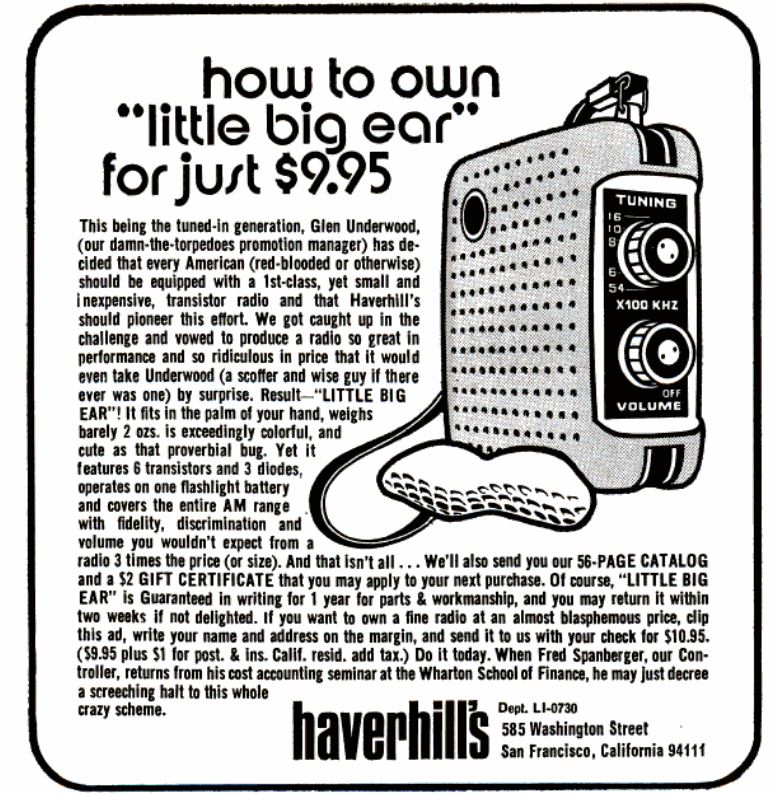Haverhill’s: a weird stuff-emporium of the 1960s and 1970s, with goofy ads in big magazines like LIFE.
Let’s start with the name, stylized as: haverhill’s. Why? Because this is post-apex America and it’s time to be humble. Fonts go Helvetica on us and upper-case bows meekly into lower-case. The ad copy, too, no longer is no longer boasting and preening about miracle ingredients in gasoline or hair tonic. Instead, it’s all goofy and loopy and prone to tangents, like this for a simple serrated knife:
In our most compulsive desire to make new friends we decided to give away a whole truckload of MAC THE KNIFE…masterpiece of Vulcan’s art.
And later:
But, alas, our generous impulse was thwarted by one of our superstitious supernumeraries of officiously insisted that giving away a knife is very bad luck…
So forth and so on for a knife. A serrated knife.
Or for an AM-FM radio:
When Fred Spanberger, our Controller, returns from his cost accounting seminar at the Wharton School of Finance, he might just decree a screeching halt to this whole crazy scheme.
For a radio. If you dress it up well enough, people will buy.
At the time, Haverhill’s operated out of the very 1960s-ish address of 582 Washington St., San Francisco.
Now, Haverhill’s is operated out of a house at 16911 Grays Bay Blvd, Wayzata, Minnesota.
